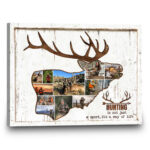I. Choosing the Right Wood for Custom Items
II. Designing Unique and Marketable Products
III. Pricing Strategies for Profit
IV. Marketing and Selling Your Custom Wooden Items
Are you looking to start making custom wooden items but not sure where to begin? Choosing the right type of wood is crucial to the success of your projects. The type of wood you select will influence the overall look, feel, and quality of your creations. Let’s dive into some tips on how to choose the best wood for your custom items.
1. Consider the Type of Project
Before selecting a type of wood, think about the specific project you have in mind. Different types of wood are better suited for certain projects than others. For example, if you are making a cutting board, you will want to use a hardwood like maple or cherry that can withstand regular use and moisture. On the other hand, if you are making a decorative item, a softer wood like pine or cedar may be more appropriate.
2. Think about Durability
When choosing wood for your custom items, consider the durability of the wood. Some woods are more prone to scratches, dents, and wear over time. If you want your creations to stand the test of time, opt for a hardwood like oak, walnut, or mahogany. These woods are known for their strength and longevity.
3. Take Appearance into Account
The type of wood you choose will also impact the appearance of your custom items. Some woods have a rich, dark color, while others have a lighter, more natural look. Consider the aesthetic you are going for when selecting a type of wood. For a rustic, farmhouse look, reclaimed barn wood may be the perfect choice. For a more modern and sleek design, consider using a wood like birch or ash.
4. Factor in Cost
Wood can vary greatly in price depending on the type and quality. Before selecting a type of wood for your custom items, consider your budget. Some woods, like exotic hardwoods, can be quite expensive, while more common woods like pine or poplar are more budget-friendly. Keep in mind that while cost is important, investing in higher quality wood can lead to a better end product.
5. Test Different Woods
If you’re unsure about which type of wood to use for your custom items, don’t be afraid to experiment. Purchase small samples of different woods and test them out before committing to a larger project. This will give you a better idea of how each type of wood works and help you make an informed decision.
Choosing the right wood for your custom items is a crucial step in creating high-quality, marketable products. By considering the type of project, durability, appearance, cost, and testing out different woods, you can ensure that your creations are not only beautiful but also built to last. Happy woodworking!
Designing Unique and Marketable Products
So, you’ve chosen the perfect wood for your custom items, now it’s time to let your creativity flow and design unique and marketable products that will catch the eye of potential customers. The key to success in this step is to think outside the box and come up with designs that stand out from the rest.
1. Know Your Target Audience: Before diving into the design process, it’s essential to understand who your target audience is. Are you catering to young professionals, nature enthusiasts, or home decor enthusiasts? Knowing your audience will help you tailor your designs to meet their preferences and needs.
2. Research Trends: Stay up-to-date with the latest trends in the wooden products market. Are there any popular styles or designs that are currently in demand? Incorporating these trends into your designs can help attract a wider audience and increase your sales.
3. Create a Signature Style: Developing a signature style can set you apart from your competitors and help build brand recognition. Whether it’s a unique carving technique, a specific color palette, or a distinct design element, having a signature style will make your products instantly recognizable to customers.
4. Consider Functionality: While aesthetics are important, don’t forget to consider the functionality of your products. Make sure your designs are practical and serve a purpose for your customers. Whether it’s a beautifully carved cutting board or a stylish wall clock, functionality should always be a priority.
5. Get Feedback: Don’t be afraid to seek feedback from friends, family, or even potential customers on your designs. Constructive criticism can help you refine your designs and make them more appealing to your target audience. Consider creating prototypes or mock-ups to test your designs before launching them to the market.
6. Quality Materials and Craftsmanship: Remember that the quality of your products is just as important as the design itself. Use high-quality wood and pay attention to the craftsmanship of your items. Customers are willing to pay more for products that are well-made and built to last.
7. Stay True to Your Brand: As you design your products, make sure they align with your brand values and mission. Whether you focus on sustainability, craftsmanship, or innovation, your designs should reflect what your brand stands for. This will help you build a loyal customer base who resonates with your brand identity.
Designing unique and marketable wooden products requires a combination of creativity, research, and attention to detail. By following these tips and staying true to your brand, you can create products that not only stand out in the market but also resonate with your target audience. So, let your imagination run wild and start designing the next best-selling custom wooden item today!
Pricing Strategies for Profit
So, you’ve mastered the art of choosing the right wood and designing unique custom wooden items. Now comes the tricky part – pricing your products. Setting the right price is crucial for your business to be profitable and sustainable. Here are some tips on how to price your custom wooden items effectively:
1. Calculate Your Costs
Before you can determine your pricing strategy, you need to know how much it costs to make each item. Factor in the cost of materials, labor, tools, overhead expenses, and any other costs associated with producing your products. This will give you the baseline price you need to cover to break even.
2. Determine Your Profit Margin
Once you have calculated your costs, decide on the profit margin you want to achieve. Typically, a profit margin of 20-50% is considered reasonable for handmade wooden items. However, you can adjust this based on your market research and competition.
3. Research Your Market
Take the time to research your target market and competitors to understand the going rate for similar custom wooden items. This will help you position your products competitively and ensure that your pricing is attractive to customers while still allowing you to make a profit.
4. Consider Value-Based Pricing
Instead of pricing solely based on costs, consider the value your custom wooden items provide to customers. If your products are unique, high-quality, or offer additional benefits, you can justify pricing them higher than similar items in the market.
5. Test Different Price Points
Don’t be afraid to experiment with different price points to see what works best for your business. You can offer discounts, bundle products, or run promotions to gauge customer response and adjust your pricing strategy accordingly.
6. Factor in Seasonality and Trends
Keep in mind that demand for custom wooden items may fluctuate based on seasons or trends. Adjust your pricing strategy accordingly to capitalize on peak seasons and stay competitive in the market.
7. Don’t Underprice Your Products
While it may be tempting to lower your prices to attract more customers, be cautious of underpricing your products. Not only does this devalue your hard work and craftsmanship, but it can also hurt your bottom line in the long run.
8. Be Transparent About Your Pricing
Clearly communicate the value and quality of your custom wooden items to customers to justify your pricing. Transparency about your pricing will build trust with customers and make them more willing to pay a fair price for your products.
By following these pricing strategies, you can ensure that your custom wooden items are priced effectively to attract customers, generate profit, and sustain your business in the long term. Remember, pricing is not set in stone – be flexible and willing to adjust your strategy as needed to achieve success in the market.
Marketing and Selling Your Custom Wooden Items
So, you’ve put your heart and soul into creating beautiful custom wooden items, and now it’s time to get them out into the world. But how do you effectively market and sell your products to ensure success? Let’s dive into some key strategies to help you showcase your craftsmanship and grow your business.
1. Build a Strong Online Presence
In today’s digital age, having a strong online presence is crucial for reaching a wider audience. Create a professional website or online shop to showcase your products and attract potential customers. Utilize social media platforms like Instagram and Facebook to engage with your audience, share behind-the-scenes glimpses of your creative process, and drive traffic to your online store.
2. Tell Your Story
People love hearing the story behind a product. Share your passion for woodworking, your inspiration behind each piece, and the unique techniques you use. By telling your story, you create a personal connection with customers, making your products more meaningful and memorable.
3. Collaborate with Influencers and Bloggers
Partnering with influencers and bloggers in the woodworking or home decor niche can help expose your products to a larger audience. Reach out to influencers whose style aligns with your brand and offer them your custom wooden items in exchange for a review or feature on their platform. This can help generate buzz and drive sales.
4. Participate in Craft Fairs and Markets
Showcasing your custom wooden items at local craft fairs, markets, and pop-up events allows you to connect with customers face-to-face and receive real-time feedback. These events are not only great for selling your products but also for networking with other artisans and building brand awareness within your community.
5. Offer Customization Options
One of the key selling points of custom wooden items is their personalized touch. Consider offering customization options such as engraving initials, choosing different wood finishes, or creating bespoke designs based on customer preferences. This can set you apart from mass-produced products and appeal to customers looking for something unique.
6. Provide Excellent Customer Service
Customer service plays a significant role in building trust and loyalty with your customers. Be responsive to inquiries, address any concerns promptly, and go above and beyond to ensure a positive buying experience. Happy customers are more likely to return and recommend your custom wooden items to others.
By implementing these marketing and selling strategies, you can effectively promote your custom wooden items, attract a loyal customer base, and ultimately grow your woodworking business. Remember to stay true to your craft, showcase your passion, and let your creativity shine through in every piece you create. Happy selling!










Comments